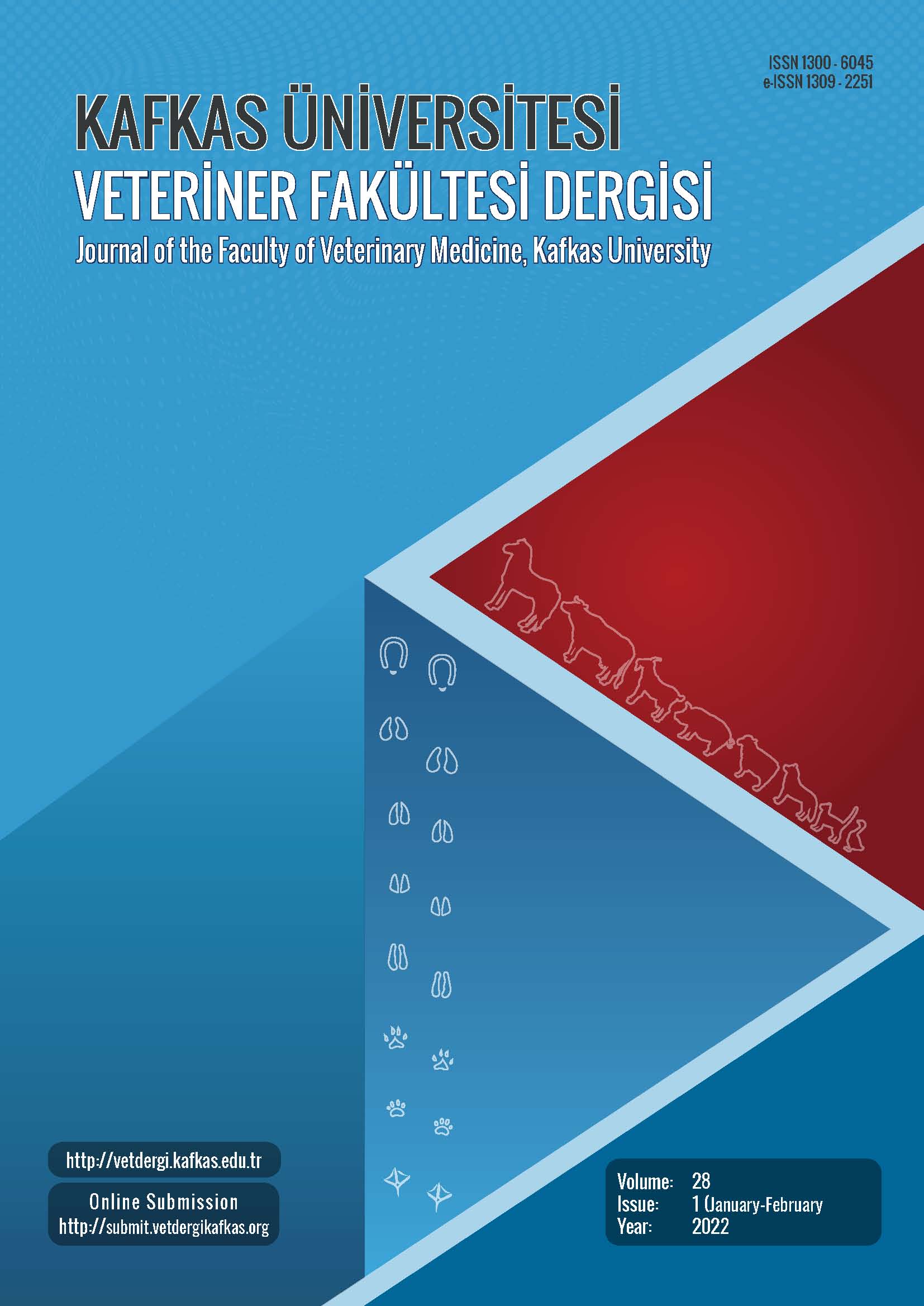
This journal is licensed under a Creative Commons Attribution-NonCommercial 4.0 International License
Kafkas Üniversitesi Veteriner Fakültesi Dergisi
2022 , Vol 28 , Issue 2
Blood and Milk Beta-hydroxybutyric Acid Concentrations in Diff erent Dairy Cattle Breeds and Association of Subclinical Ketosis with Postpartum Health Disorders, Culling Rate, Body Condition Score, Parity and Milk Production in Holstein
1University of Muğla Sıtkı Koçman, Faculty of Veterinary Medicine Milas, Department of Internal Medicine, TR-48200 Milas, Muğla - TÜRKİYE2Free Researcher, Nispetiye Mah. Bakır Sok. No. 1, TR-34340 Beşiktaş, İstanbul - TÜRKİYE
3University of Muğla Sıtkı Koçman, Faculty of Science, Department of Statistics, TR-48000 Kötekli, Muğla - TÜRKİYE
4University of Erciyes, Faculty of Veterinary Medicine, Department of Internal Medicine, TR-38280 Talas, Kayseri, TÜRKİYE DOI : 10.9775/kvfd.2021.26804 Th e aim of the study was to analyse beta-hydroxybutyric acid concentration in the blood (BBAC) and milk (MBAC) at postpartum week 2 (PPW2) and week 4 (PPW4) in Holstein (n=216, 8 farms), Montbeliard (n=23), Simmental (n=38) and Holstein/Montbeliard Crossbreed (n=23, BBAC only). Furthermore, the prevalence of subclinical ketosis (SCK) and its association with postpartum health disorders (PPHD), body condition score (BCS) and average daily milk yield in 90 days in milk (90DIM) were evaluated in Holstein. Holstein-Crossbreed and Montbeliard had significantly lower postpartum BBAC than others. Primiparous Montbeliard and Holstein had significantly higher MBAC at PPW2 than PPW4. Cows having BCS2 and 4 at calving had higher MBAC at PPW2 and 4 that was associated significantly with metritis and multiple diseases. Holstein with BCS4 at calving had higher BBAC at PPW2 and 4. SCK prevalence in the blood (BBAC≥1.2 mmol/L, BSCK) and milk (MBAC=100 μmol/L, MSCK1), (MBAC≥200 μmol/L, MSCK2) and (MBAC≥100 μmol/L, MSCK1/2) was 8.3, 11.8, 5.8 and 17.3% at PPW2 and 4.7, 4.9, 6.9 and 11.9% at PPW4 in Holstein respectively. Holstein with SCK was more likely to develop PPHD in 90DIM. MSCK1 and MSCK1/2 did not associate milk production loss in Holstein. Holstein with BSCK and MSCK2 at PPW2 had a 6.7 kg loss of average daily milk yield in 90DIM. Culling rate was 3.7% in Holstein and MSCK-2 positive Holstein at PPW2 was significantly more likely to be culled (25%, Odds:11.2, P<0.05) in 90DIM. In conclusion, cows having BCS2 and 4 at calving had higher MBAC and BBAC at PPW2 and 4. Holstein-Crossbreed and Montbeliard had much lower postpartum BBAC than Holstein and Simmental. BSCK and MSCK2 caused signifi cantly risk factor for PPHD, culling rate and milk production in Holstein. Keywords : Beta-hydroxybutyric acid, Holstein, Metabolic diseases, Montbeliard, Simmental, Subclinical ketosis










